Kentix offers the right locking component for every requirement. Various factors need to be taken into account when making a selection: the nature of the door, the environment, the number of daily operations and the type of component control (wireless or wired). The security class must also be taken into account. The locking function, the need for increased security through two-factor authentication using RFID and an individual PIN as well as the resistance class against mechanical force (RC classes for burglar-resistant components) must be taken into account.
Basic information
General locking function
Closing: The latch in the door lock keeps the door closed and is operated with the door handle or a door opener in the strike plate of the door frame.
Locking: The bolt in the lock engages in the door frame. Opening with a lever handle or door opener is not possible. The door is unlocked using a profile cylinder, motor cylinder or motor lock.
Equipment for panic and escape doors
These doors are locked to prevent access to the secured area, but must always be able to be opened by pressing the handle on the inside. Special locks are available for this function, which are usually identified as such with “P” or “Panic” in the type designation. There are various mechanisms that support this function. Most of them use a split square for the door handle.
Frequency of use – stress
The use of locking components results in mechanical stress on the components. The overview table “Knobs and handles” shows the number of openings per day for which each type of component is designed. Wall readers have no mechanical components for opening doors. Here, the quality of the controlled door opener, door lock or motor cylinder is decisive for the function within the expected frequency of use.
Ambient conditions (IP protection classes)
The environment of the door determines the required protection class of the locking components. The protection class of electrical devices is designated with an IP code (Ingress Protection). This consists of two codes, for example “IP55”. The first number indicates the protection against contact and the ingress of foreign bodies into the device, the second number indicates the protection against the ingress of water. The higher the numbers, the better the protection. Protection class IP66 is recommended for doors in unprotected outdoor areas. Indoors, IP55 is sufficient.
Mechanical resistance classes against burglary and vandalism
The resistance classes of burglar-resistant components (RC – Resistance Class) in accordance with DIN EN 1627 indicate how much resistance a component can provide against mechanical impact. For Kentix door handles and cylinders, this information can be found in the “Knobs and handles” overview table.
Greater security through double authentication
In areas requiring special security, a second factor may be required to authenticate the user. Wall readers with built-in numeric keys and the RA4 rack lever support this, if required also for switching the alarm system and depending on time profiles.
Communication of the components via cable or radio
The access components send the read user data to the KentixONE system. Once the data has been successfully checked, they receive a command from there to open the door. Two methods are available for this communication. Door knobs and lever handles are in contact with the system via radio (BLE). Wall readers use a wired data bus for this.
Power supply for the components
With lever handles and knobs, the door is opened by an internal coupling to the lock mechanism. There is a battery in the components for this purpose. When wall readers are used, this is carried out by the AccessManager BUS using its built-in POE splitter or an external power supply to the electric strike.
Knobs and lever handles for direct door installation
The knobs and lever handles are battery-operated and are controlled by a wireless connection via an AccessManager radio. No additional cable laying is required.
Knobs and lever handles are electromechanical devices. They are installed in the mortise lock in the door leaf. The nature of the door determines how much mechanical stress is placed on the components during operation. An office door, for example, is easier to open and close than a heavy metal door. The following tables show the suitability for different types of doors, for example glass doors with metal frames, wooden doors or fire doors.
Type | KXC-KN4 | KXC-KN1 | KXC-LE | |||
|---|---|---|---|---|---|---|
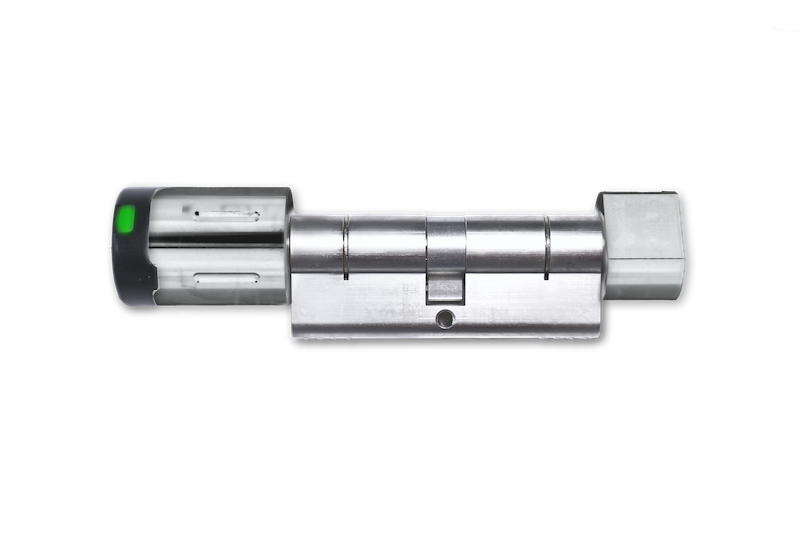 | 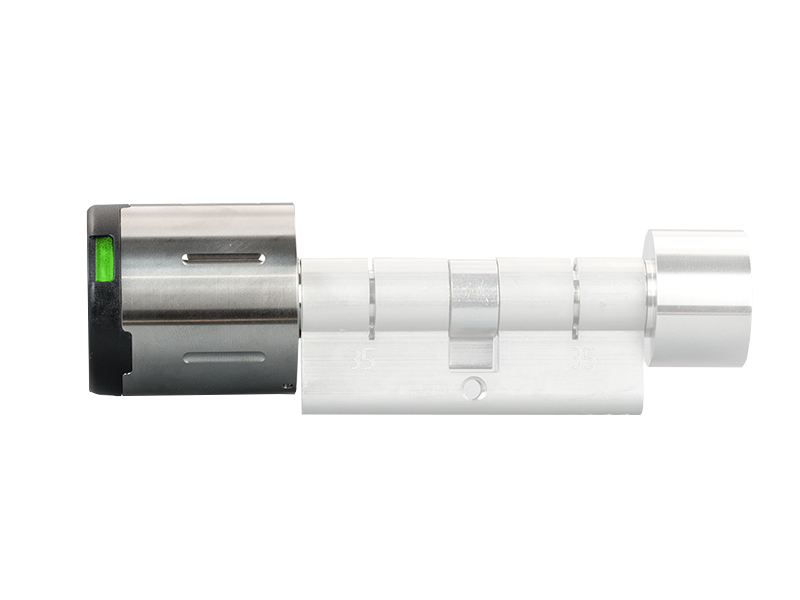 | 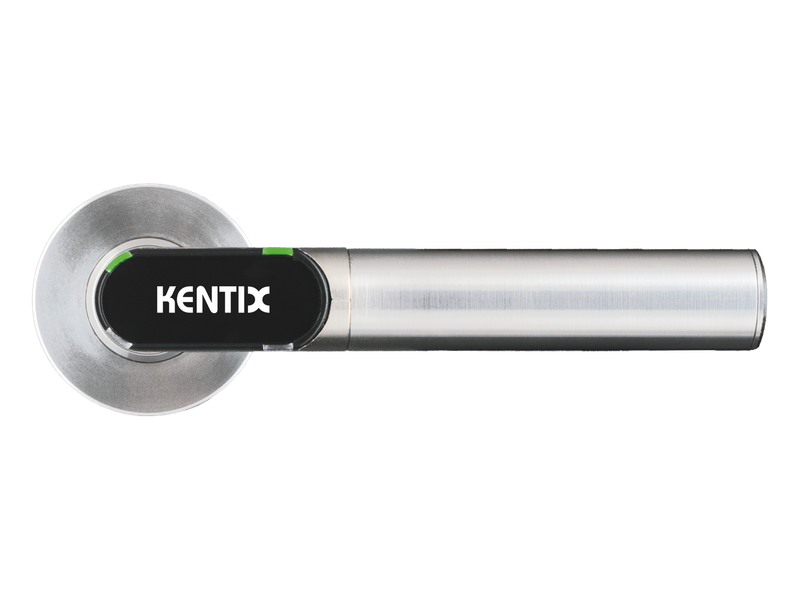 | ||||
| Protection class | IP55 | IP66 | IP55 | IP55 | ||
| Resistance class | RC 2 RC 5 (VDS version) | RC 0 | RC 0 | |||
| Recommended booking frequency per day | 50 | 20 | 100 | |||
| Installation in interior doors | ||||||
| Wooden door | ✔ | ✔ | ✔ | ✔ | ||
| Glass door | ✔ | ✔ | ✔ | ✔ | ||
| Aluminum frame door glass | ✔ | ✔ | ✔ | ✘ | ||
| Steel door fire protection | ✔ | ✔ | ✔ | ✘ | ||
| Installation in external doors with weather protection (no direct weather influence) | ||||||
| Wooden door heavy | ✔ | ✔ | ✔ | ✘ | ||
| Aluminum frame door glass | ✔ | ✔ | ✔ | ✘ | ||
| Steel door | ✔ | ✔ | ✔ | ✘ | ||
| Installation in external doors without weather protection (direct exposure to weather) | ||||||
| Aluminum frame door glass | ✘ | ✔ | ✘ | ✘ | ||
| Steel door | ✘ | ✔ | ✘ | ✘ | ||
| Gates and fence doors | ✘ | ✔* | ✘ | ✘ | ||
Wall reader for controlling door openers and motorized locks
The wall readers are connected to an AccessManager BUS via a bus connection and wired to motor locks, motor cylinders or electric strikes. The PoE voltage of the AccessManager is sufficient to directly supply the connected locking devices (door opener, motorized lock) with 24 VDC/500 mA. A maximum of two wall readers and two locking devices can be used per AccessManager.
The control of the locking devices works on wall readers without mechanics. Instead, the locking device must be selected to suit the load.
| Type | KXC-WA3 | KXC-WA4 | KXC-WA6 | KXC-WA7 |
|---|---|---|---|---|
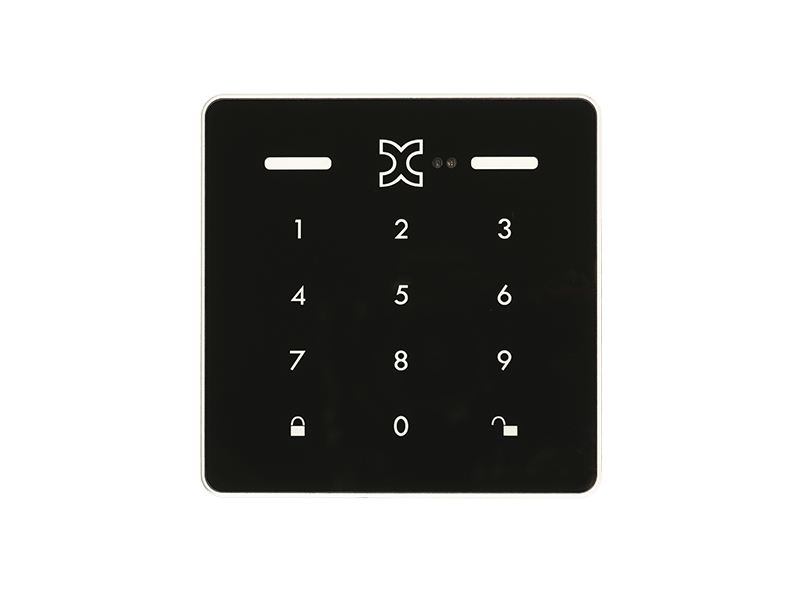 | 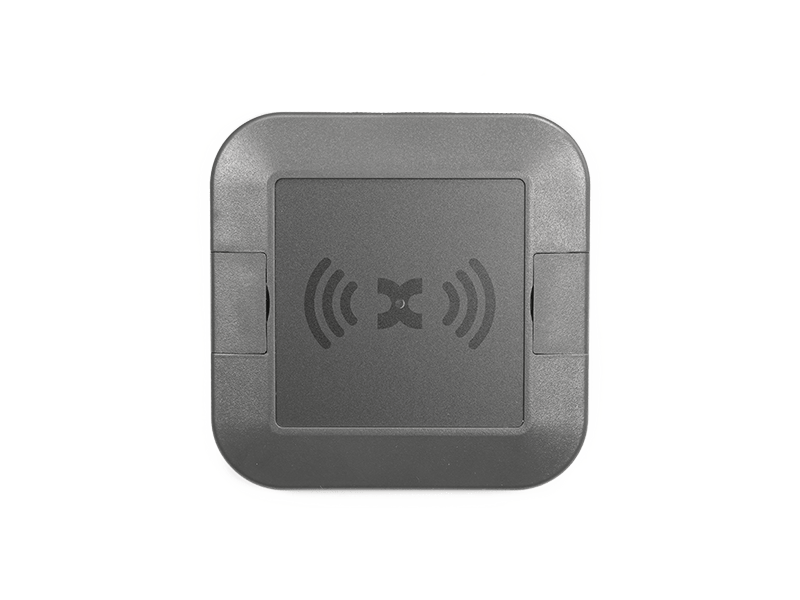 |  |  | |
| Protection class | IP54* | IP67 | IP66 | IP20** |
| Recommended booking frequency per day | No restrictions | |||
Rack, cabinet and enclosure doors
This type of door can be secured with wired and wireless components. The recommendations for the intended use and the respective locking components are contained in the following table.
The KXP-2-RS (AcessManager BUS) can be controlled without a wall or rack reader using a pushbutton, the KentixONE software or the KentixONE app.
| Kind | Rack lever wired and wireless | Wired wall reader | |||
|---|---|---|---|---|---|
| Image | 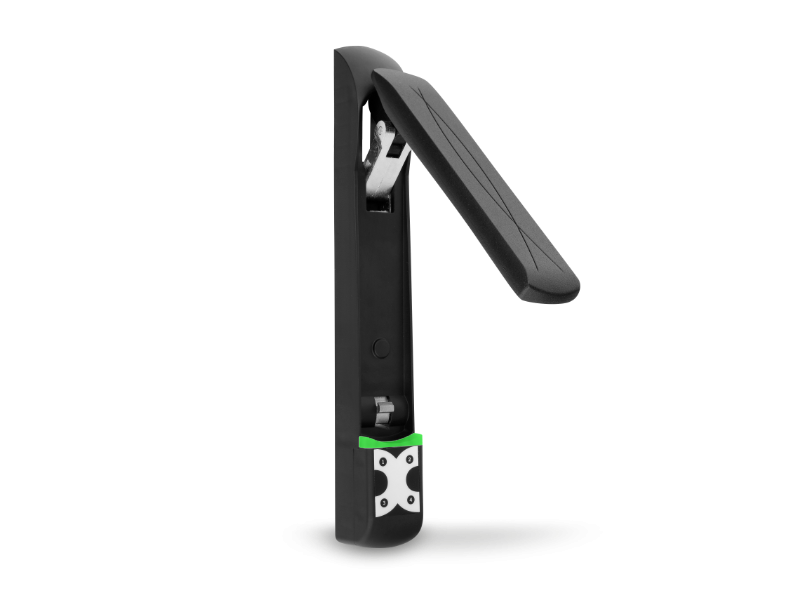 | 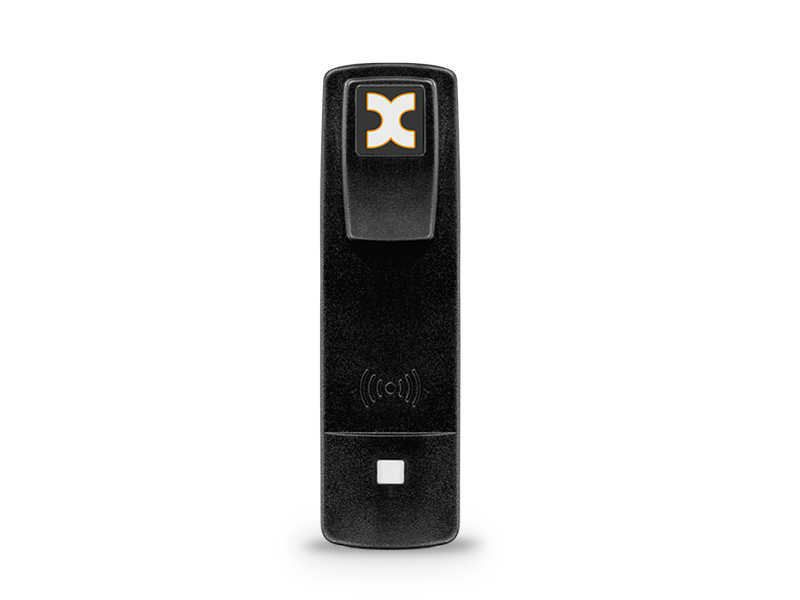 |  | 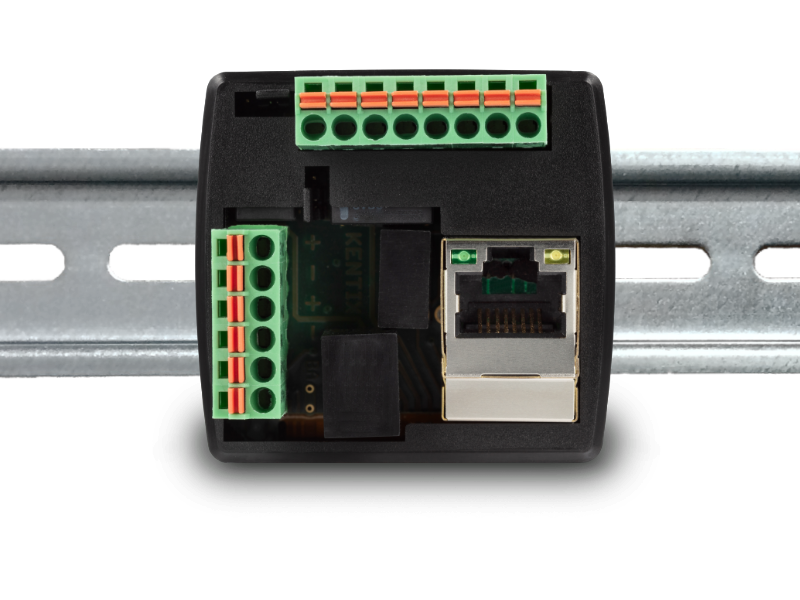 |  |
| Type | KXC-RA4 | KXC-RA2 | KXC-WA7* | KXP-2-RS * | KXC-WA6 |
| Protection class | IP20 | IP20 | IP20 | IP20 | IP66 |
| Indoor installation | |||||
| IT rack door | ✔ | ✔ | ✘ | ✘ | ✘ |
| Door IT distributor | ✔ | ✔ | ✘ | ✘ | ✘ |
| Door IT Safe | ✘ | ✘ | ✘ | ✔ | ✔ |
| Outdoor installation | |||||
| Multifunctional housing (MFG) | ✘ | ✘ | ✔ | ✔ | ✘ |
| Door IT Safe | ✘ | ✘ | ✘ | ✔ | ✔ |